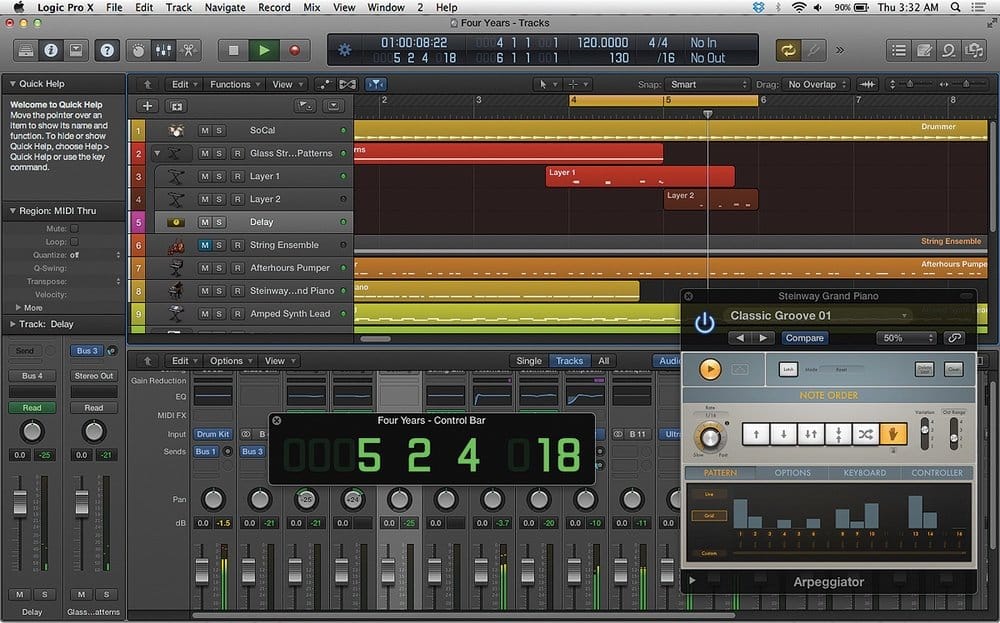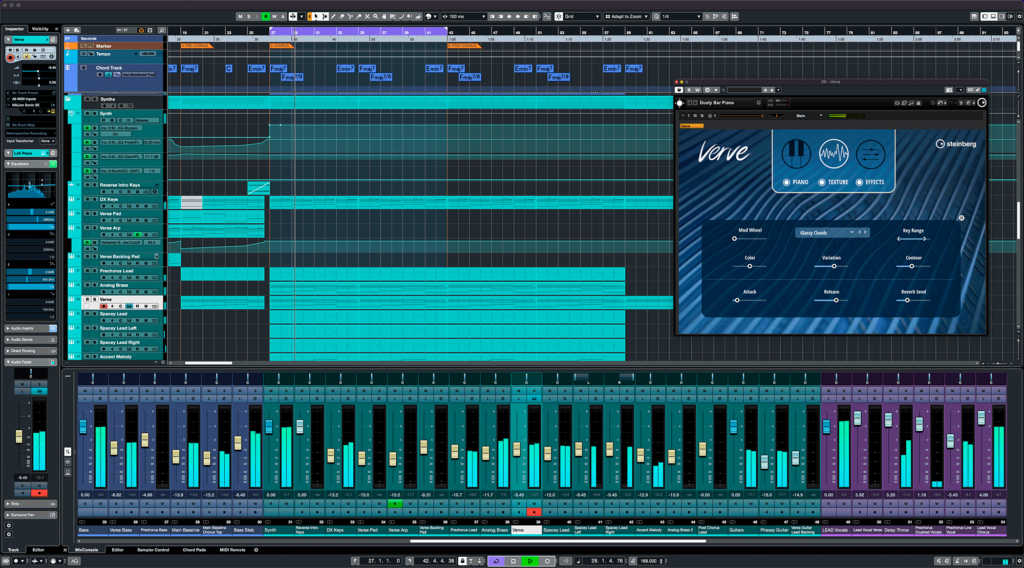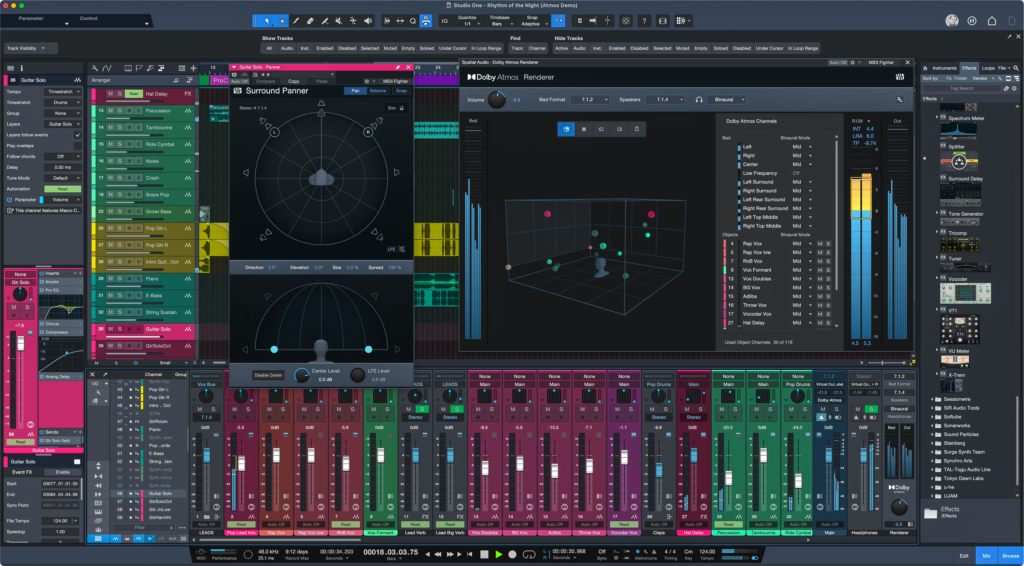Introduction
In the dynamic world of music production, choosing the right software is crucial for translating your creative ideas into polished tracks. The right Digital Audio Workstation (DAW) can significantly influence your workflow, creativity, and overall sound quality. With an abundance of options available, from industry-standard giants to innovative newcomers, selecting the best music production software tailored to your unique needs can be daunting.
The right DAW isn’t just a tool; it’s an extension of your creative process, shaping how you compose, record, edit, and mix your music. Factors such as user interface, compatibility, available plugins, and support can vary greatly between different software, making the decision even more complex. Moreover, as technology continues to evolve, new features and updates regularly emerge, adding another layer of consideration for producers.
This article aims to guide you through the labyrinth of choices, providing insights into the strengths and features of various DAWs. We’ll explore the key aspects to consider when choosing a music production software, highlight some of the most popular and highly regarded options in the industry, and offer tips for making the best choice for your specific needs. Whether you’re a seasoned producer or a budding artist, our goal is to help you make an informed decision that enhances your music production journey.
Criteria for Choosing Music Production Software
Selecting the right music production software involves evaluating several key factors to ensure it meets your specific needs. Here are the critical criteria to consider:
Usability: User Interface and Learning Curve
The usability of a DAW is paramount, especially if you’re new to music production. A clean, intuitive user interface can make a significant difference in how quickly you can learn and efficiently use the software. Look for software that offers a balance between simplicity for beginners and advanced features for experienced users. Additionally, consider the availability of customizable layouts that can adapt to your workflow preferences.
Features: Range of Tools and Capabilities
Different DAWs offer varying levels of functionality, from basic recording and editing tools to advanced features like MIDI programming, virtual instruments, and sophisticated mixing capabilities. Evaluate what specific tools and features you need, such as:
- Audio recording and editing
- MIDI support and virtual instruments
- Mixing and mastering tools
- Built-in effects and plugins
- Third-party plugin compatibility A comprehensive feature set can greatly enhance your creative possibilities and production quality.
Compatibility: Operating Systems and Hardware Requirements
Ensure that the software you choose is compatible with your operating system and meets the hardware requirements of your computer. Some DAWs are exclusive to certain operating systems (e.g., Logic Pro for macOS), while others are cross-platform. Check for compatibility with your existing hardware, such as audio interfaces and MIDI controllers, to avoid any integration issues.
Support and Community: Availability of Tutorials, Forums, and Customer Support
Having access to robust support resources can significantly ease the learning curve and troubleshoot any issues you encounter. Look for software with extensive tutorials, both official and user-generated, active user forums, and responsive customer support. A vibrant community can also provide valuable insights, tips, and inspiration.
Price: Cost and Available Payment Plans
The cost of music production software can vary widely, from free options to high-end professional suites. Consider your budget and the value offered by the software. Some DAWs offer one-time purchases, while others have subscription models or tiered pricing based on feature sets. Evaluate the cost-benefit ratio and any available payment plans to make an informed financial decision.
By carefully considering these criteria, you can select the music production software that best aligns with your needs, skill level, and budget, ultimately enhancing your music creation process.
Top Music Production Software
Choosing the right DAW is crucial, and understanding the strengths and weaknesses of each can help you make an informed decision. Here’s a detailed look at some of the top music production software available today:
1. Ableton Live
Overview and Unique Features: Ableton Live is renowned for its innovative session view, which allows for real-time composition and performance. Its real-time performance tools make it a favorite among live performers and electronic music producers. Ableton Live also offers a vast array of built-in instruments and effects, along with robust MIDI support.
Pros:
- Intuitive session view for live performance and improvisation.
- Strong MIDI and audio editing capabilities.
- Extensive library of sounds, instruments, and effects.
- Seamless integration with hardware controllers like Ableton Push.
Cons:
- Can be overwhelming for beginners due to its unique workflow.
- Higher learning curve for those accustomed to traditional DAWs.
Ideal Users:
- Live performers.
- Electronic music producers.
- Artists seeking a dynamic and flexible production environment.
2. FL Studio
Overview and Unique Features: FL Studio, also known as Fruity Loops, is known for its user-friendly interface and extensive plugin support. It features a pattern-based music sequencer and is highly popular among hip-hop and electronic music producers. The software offers lifetime free updates, making it a cost-effective choice.
Pros:
- Intuitive and easy-to-navigate interface.
- Excellent built-in instruments and effects.
- Lifetime free updates.
- Strong support for third-party plugins.
Cons:
- Limited audio recording capabilities compared to other DAWs.
- Can be seen as less professional in certain music production circles.
Ideal Users:
- Beginners.
- Hip-hop producers.
- Budget-conscious musicians seeking a comprehensive toolset.

3. Logic Pro X
Overview and Unique Features: Logic Pro X is a powerful DAW exclusively available on macOS. It boasts a comprehensive sound library, advanced editing tools, and a wide range of virtual instruments. Logic Pro X is favored by professional producers and musicians for its robust feature set and seamless integration with macOS.
Pros:
- Comprehensive sound library with high-quality samples and loops.
- Advanced MIDI and audio editing capabilities.
- User-friendly interface with a professional workflow.
- Excellent built-in plugins and effects.
Cons:
- Only available for macOS, limiting cross-platform compatibility.
- Requires a powerful Mac for optimal performance.
Ideal Users:
- Mac users.
- Professional producers.
- Musicians seeking a feature-rich production environment.
4. Pro Tools
Overview and Unique Features: Pro Tools is considered the industry standard for audio recording and editing. It offers advanced audio editing capabilities, making it a top choice for studio engineers and professional mixers. Pro Tools excels in handling large-scale projects with ease.
Pros:
- Industry-standard for professional recording and editing.
- Powerful audio editing and mixing tools.
- Excellent support for hardware integration.
- Highly reliable and stable.
Cons:
- Expensive compared to other DAWs.
- Steeper learning curve for beginners.
- Subscription-based pricing model for some versions.
Ideal Users:
- Studio engineers.
- Professional mixers.
- Users requiring advanced audio editing tools.

5. Cubase
Overview and Unique Features: Cubase is known for its powerful MIDI capabilities and extensive plugin support. It offers a range of features for composing, recording, editing, and mixing music. Cubase is particularly popular among composers and advanced producers for its versatility.
Pros:
- Powerful MIDI editing and sequencing tools.
- Extensive library of sounds and plugins.
- Versatile and flexible for various music production needs.
- High-quality audio engine.
Cons:
- Can be complex and intimidating for beginners.
- Higher cost for the full feature set.
Ideal Users:
- Composers.
- Advanced producers.
- Musicians seeking a versatile production tool.
6. Reason Studios
Overview and Unique Features: Reason Studios stands out with its virtual rack, offering a modular environment for sound design. It allows users to connect various instruments and effects in a highly visual and intuitive way. Reason is favored by sound designers and experimental producers.
Pros:
- Unique modular environment for creative sound design.
- Extensive collection of virtual instruments and effects.
- Strong support for third-party plugins.
- Intuitive drag-and-drop interface.
Cons:
- Limited audio recording and editing capabilities compared to other DAWs.
- Can be resource-intensive on your computer.
Ideal Users:
- Sound designers.
- Experimental producers.
- Musicians looking for a unique approach to music production.

7. Studio One
Overview and Unique Features: Studio One by PreSonus offers drag-and-drop functionality and an integrated mastering suite, making it an all-in-one solution for music production. It is known for its user-friendly interface and efficient workflow, suitable for both beginners and professionals.
Pros:
- Intuitive drag-and-drop interface.
- Integrated mastering suite.
- Strong support for third-party plugins.
- Efficient and streamlined workflow.
Cons:
- Lacks some advanced features found in other high-end DAWs.
- Relatively new compared to industry veterans.
Ideal Users:
- All-in-one solution seekers.
- Project studios.
- Musicians looking for an efficient and user-friendly DAW.
8. Bitwig Studio
Overview and Unique Features: Bitwig Studio is known for its modular sound design capabilities and advanced MIDI support. It offers a flexible and innovative environment for electronic musicians and sound designers, with features like clip automation and hardware integration.
Pros:
- Modular sound design capabilities.
- Advanced MIDI support.
- Flexible and innovative workflow.
- Strong integration with hardware controllers.
Cons:
- Can be complex for beginners.
- Smaller user base compared to more established DAWs.
Ideal Users:
- Electronic musicians.
- Sound designers.
- Users seeking a flexible and innovative production environment.
By evaluating these top DAWs based on their unique features, pros, and cons, you can better determine which software aligns with your specific needs and production style.
Specialized Software for Specific Needs
While mainstream DAWs offer a broad range of features, certain specialized software cater to specific production needs, providing unique tools and workflows. Here’s a look at some specialized software options for mobile production, beat making, and free alternatives:
Mobile Production Software
GarageBand GarageBand is a powerful and user-friendly mobile DAW available exclusively for iOS devices. It offers a wide range of features that make it an excellent choice for on-the-go music production.
- Unique Features: Multi-touch gestures for playing instruments, live loops for creating electronic music, and a comprehensive sound library.
- Pros: Intuitive interface, integration with Logic Pro X, high-quality built-in instruments and loops.
- Cons: Limited advanced features compared to desktop DAWs, only available on iOS.
- Ideal Users: Beginners, mobile producers, and iOS users looking for a portable music production solution.
FL Studio Mobile FL Studio Mobile provides a robust music production experience on both iOS and Android devices. It mirrors the desktop version’s intuitive interface and offers a range of tools for creating music on the go.
- Unique Features: Step sequencer, piano roll, and high-quality synthesizers and drum kits.
- Pros: Cross-platform compatibility, seamless integration with FL Studio desktop version, user-friendly interface.
- Cons: Some limitations in comparison to the desktop version, smaller screen can be challenging for complex projects.
- Ideal Users: Mobile producers, FL Studio users, and those looking for a portable beat-making tool.
Beat Making Software
Native Instruments Maschine Maschine combines hardware and software for an integrated beat-making experience. It is renowned for its intuitive workflow and powerful sound engine.
- Unique Features: Extensive sound library, advanced drum synthesis, and seamless hardware integration.
- Pros: High-quality sounds and effects, intuitive interface, excellent hardware-software integration.
- Cons: Steeper learning curve for beginners, can be expensive with hardware components.
- Ideal Users: Beat makers, hip-hop producers, and electronic musicians seeking a hands-on production experience.
Akai MPC Software Akai MPC Software offers a legendary beat-making experience, known for its groove and swing. It integrates seamlessly with Akai’s MPC hardware, providing a tactile production environment.
- Unique Features: Real-time time-stretching, pitch-shifting, and advanced sampling capabilities.
- Pros: Excellent for beat making and sampling, strong hardware integration, rich feature set.
- Cons: Steeper learning curve, higher cost with hardware.
- Ideal Users: Beat makers, hip-hop producers, and those who prefer a tactile, hardware-focused production workflow.
Free Software Options
Audacity Audacity is a free, open-source audio editor and recorder. It is highly versatile and suitable for various audio editing tasks.
- Unique Features: Multi-track editing, extensive plugin support, and a wide range of built-in effects.
- Pros: Free to use, user-friendly, active community support.
- Cons: Limited advanced features for music production, not a full-fledged DAW.
- Ideal Users: Audio editors, podcasters, and users looking for a free, reliable audio editing tool.
Cakewalk by BandLab Cakewalk is a professional-grade DAW available for free, offering a comprehensive set of features for music production.
- Unique Features: Advanced MIDI and audio editing, built-in virtual instruments and effects, and unlimited tracks.
- Pros: Professional-grade features, free to use, strong community support.
- Cons: Only available on Windows, can be overwhelming for beginners.
- Ideal Users: Budget-conscious producers, Windows users, and those seeking a full-featured DAW for free.
By exploring these specialized software options, you can find the right tools to meet your specific production needs, whether you’re producing on the go, making beats, or looking for cost-effective solutions.
Conclusion
Choosing the right music production software is a critical step in your music creation journey. The right DAW can significantly enhance your workflow, creativity, and the quality of your productions. By considering factors such as usability, features, compatibility, support, and price, you can select the software that best aligns with your individual needs and goals.
We encourage you to take advantage of free demos and trial versions of different DAWs to get a hands-on feel for their interfaces and capabilities. Exploring community resources, such as tutorials, forums, and user reviews, can also provide valuable insights and help you make a more informed decision.
Remember, there is no one-size-fits-all solution in music production software. Your choice should reflect your personal workflow preferences, the type of music you create, and your specific production requirements. By making an informed decision, you’ll set yourself up for a more enjoyable and productive music-making experience. I hope you enjoyed the article let me know if you need any of your songs mixed and mastered.
